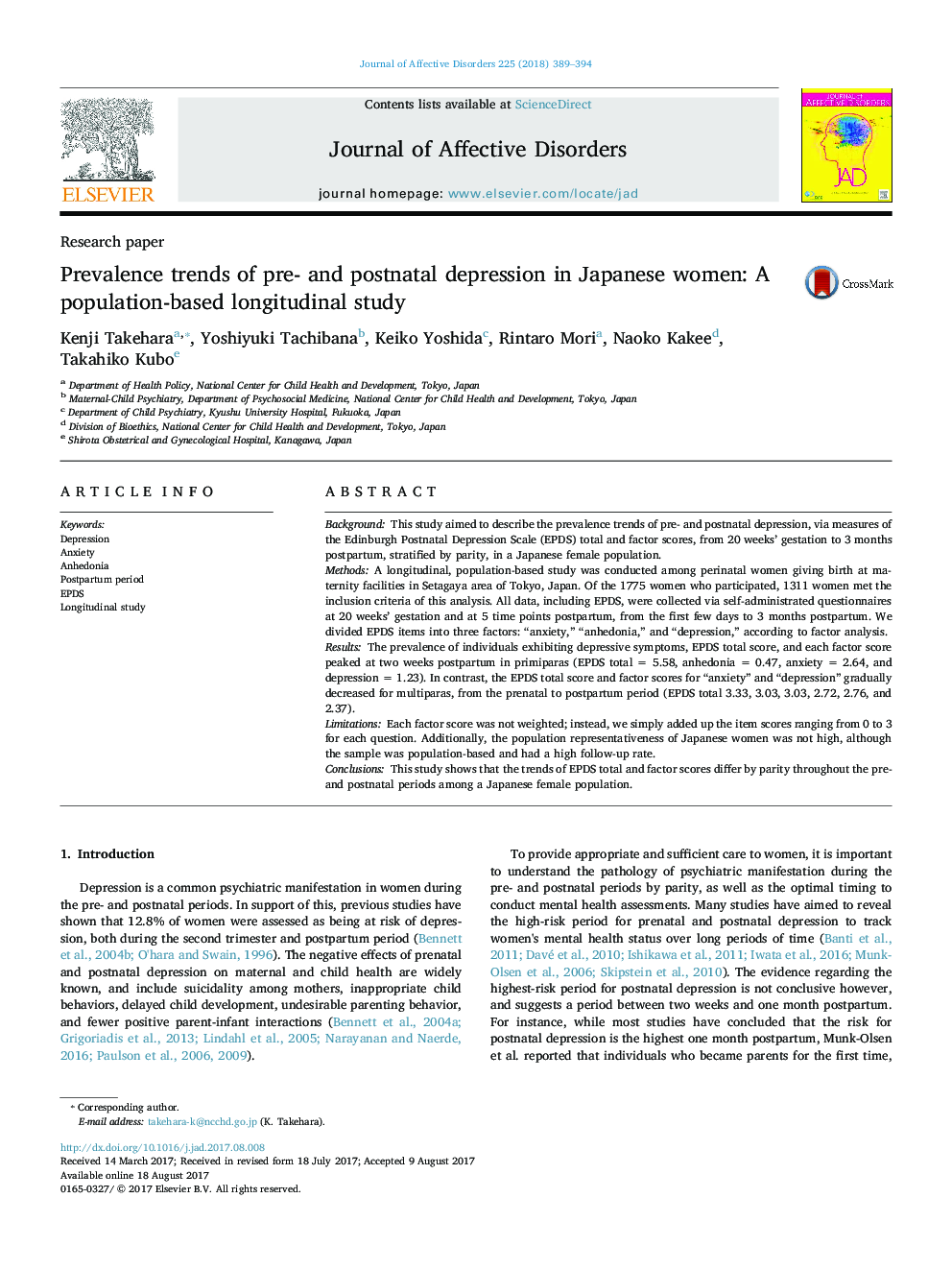| کد مقاله | کد نشریه | سال انتشار | مقاله انگلیسی | نسخه تمام متن |
|---|---|---|---|---|
| 5721737 | 1608100 | 2018 | 6 صفحه PDF | دانلود رایگان |
- A prevalence of maternal depression among primipara peaked at two weeks postpartum.
- Differences in trends of the EPDS factor scores by parity were observed.
- Almost the same factor structure has been confirmed from prenatal to postnatal period.
BackgroundThis study aimed to describe the prevalence trends of pre- and postnatal depression, via measures of the Edinburgh Postnatal Depression Scale (EPDS) total and factor scores, from 20 weeks' gestation to 3 months postpartum, stratified by parity, in a Japanese female population.MethodsA longitudinal, population-based study was conducted among perinatal women giving birth at maternity facilities in Setagaya area of Tokyo, Japan. Of the 1775 women who participated, 1311 women met the inclusion criteria of this analysis. All data, including EPDS, were collected via self-administrated questionnaires at 20 weeks' gestation and at 5 time points postpartum, from the first few days to 3 months postpartum. We divided EPDS items into three factors: “anxiety,” “anhedonia,” and “depression,” according to factor analysis.ResultsThe prevalence of individuals exhibiting depressive symptoms, EPDS total score, and each factor score peaked at two weeks postpartum in primiparas (EPDS total = 5.58, anhedonia = 0.47, anxiety = 2.64, and depression = 1.23). In contrast, the EPDS total score and factor scores for “anxiety” and “depression” gradually decreased for multiparas, from the prenatal to postpartum period (EPDS total 3.33, 3.03, 3.03, 2.72, 2.76, and 2.37).LimitationsEach factor score was not weighted; instead, we simply added up the item scores ranging from 0 to 3 for each question. Additionally, the population representativeness of Japanese women was not high, although the sample was population-based and had a high follow-up rate.ConclusionsThis study shows that the trends of EPDS total and factor scores differ by parity throughout the pre- and postnatal periods among a Japanese female population.
Journal: Journal of Affective Disorders - Volume 225, 1 January 2018, Pages 389-394
